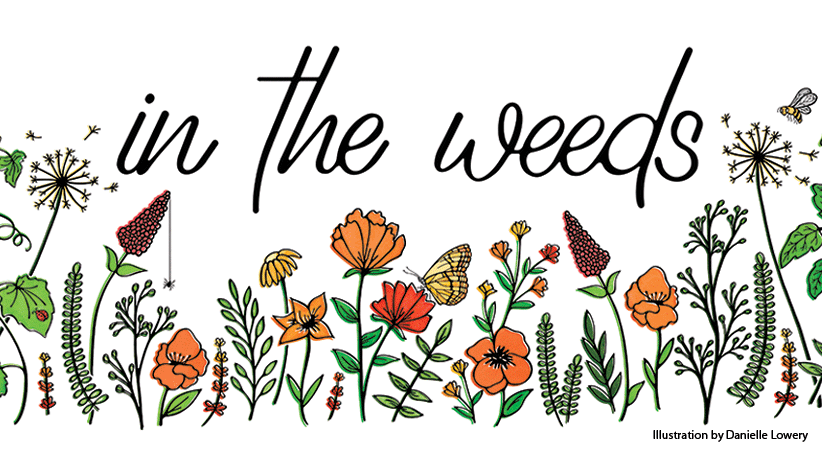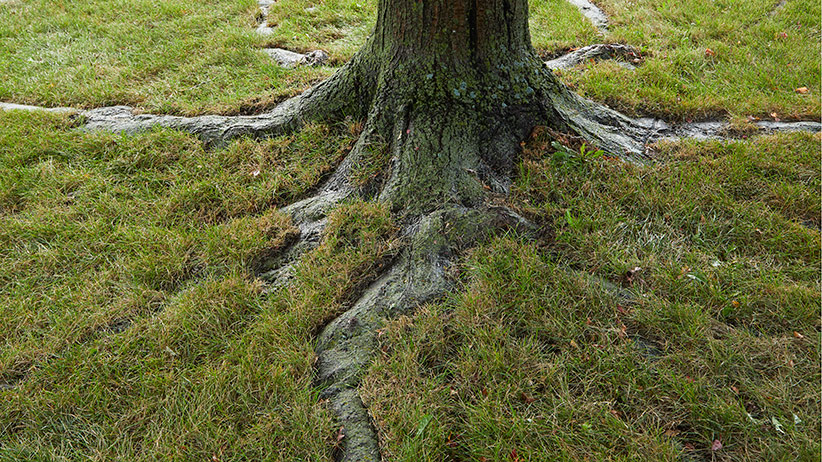
How to identify poison ivy
It's just about every gardener’s least favorite weed! Not only does poison ivy (Toxicodendron radicans) grow and spread rapidly, but it gives many people an itchy, sometimes painful, rash. It can be important to know how to spot this unpleasant plant. Poison ivy prefers moist, rich soil in full sun to part shade. You can find it along roadsides, in wooded, moist or wet areas. Check out some of its identifiable characteristics:

- This woody weed can have an upright form up to 7 ft. tall or appear as a climbing vine, hanging on to trees or fences with dark aerial roots.
- Poison ivy leaves vary in size and shape but there are always three.
- The three leaflets, which are sometimes shiny, have a reddish cast and stem.
- Leaves tend to be pointed and may have a toothed or smooth edge.
- The illustration above shows how the leaves alternate along the stem.
- Insignificant green-white flowers appear in late spring, followed by fruit that ripens about the same time the leaves turn red in fall.
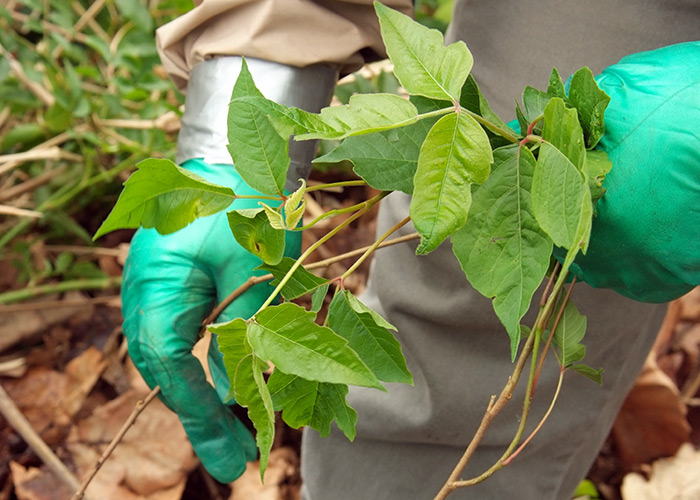
How to control and remove poison ivy
To pull or cut back the plant, be careful to keep urushiol, the sticky oil that is present in all parts of the plant, off your skin. Wear long pants, long sleeves and double gloves.
If you don’t want to handle it, spray the plant with a systemic herbicide (such as one containing glyphosate), but it’ll take time and several applications to eradicate it. You can also dab or spray the cut ends of the vine with a systemic brush killer (a herbicide that contains triclopyr is best.)
Keep an eye on any areas where you’ve removed poison ivy. There will be a few suckers or seedlings popping up here and there for a couple of years. Get them while they’re small, and you won’t have a big patch to clean up again. Oh, and you could buy a goat. They like to eat poison ivy and have no reaction to it!
Take extra precautions when dealing with poison ivy
When done working, change clothes immediately. Urushiol can remain on clothing and tools for years, but it’s water-soluble, so washing will remove it. Wash those clothes in a separate load. Even if you’re careful, it’s a good idea to wash your hands and arms with Tecnu skin cleanser when you’re done working. If you use it within an hour or two of being exposed, you’ll usually avoid getting a rash.
You Might Also Like:
10 Invasive Plants to Avoid in Your Garden
7 Common Garden Diseases
How To Get Rid of Common Garden Weeds
7 Common Garden Pests
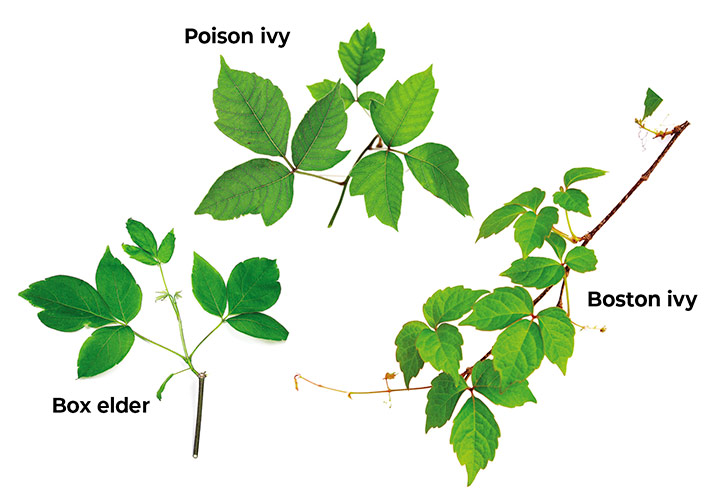
Poison ivy lookalikes
Another sneaky thing about poison ivy: It has some lookalikes. You’ve probably heard the old saying, “Leaves of three, let it be.” That’s good advice — poison ivy doesn’t really stand out in a crowd, but it always has three leaflets on each leaf.
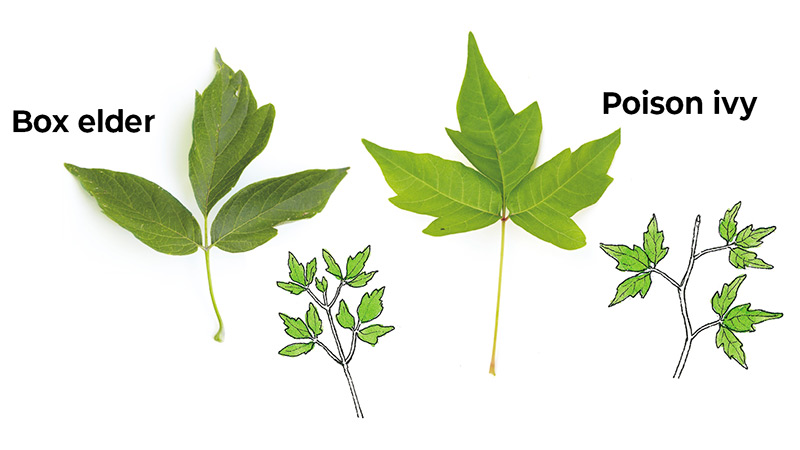
Poison ivy lookalike: Box elder
Seedlings and young plants of box elder tree (Acer negundo) are often mistaken for poison ivy and they tend to grow in the same places you’ll find poison ivy — along the fence, behind the garage, and other places where you may not do a lot of cultivating. The differences? Box elder stems aren't red and often have a grayish “bloom” on them. And box elder leaf stems are directly across from each other on the main stem, rather than alternating, as poison ivy leaves are.
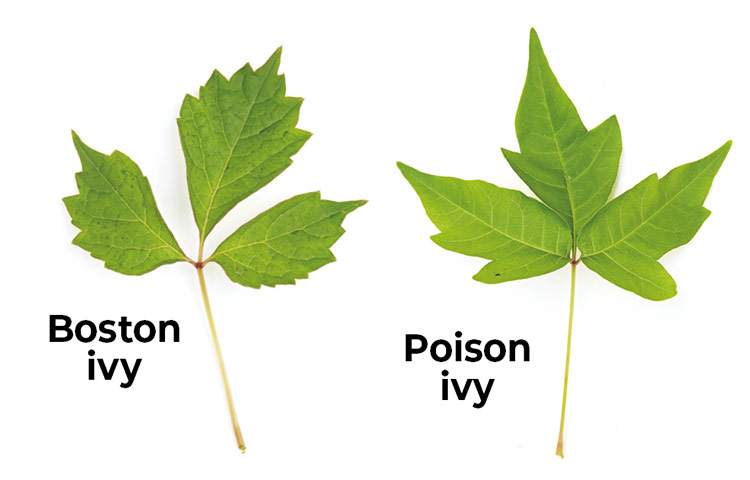
Poison ivy lookalike: Boston ivy
Another lookalike is Boston ivy (Parthenocissus tricuspidata), especially small, new growth. Unfortunately, it has a red stem, just like poison ivy, so it can be hard to tell the two apart. Usually the leaf edges are a little more jagged, and the leaves are slightly smaller. But when in doubt, it’s best to be careful!
Boston ivy’s juvenile foliage has three leaflets. As you look at the whole plant, you’ll see woody stems and mature leaves that are not divided.
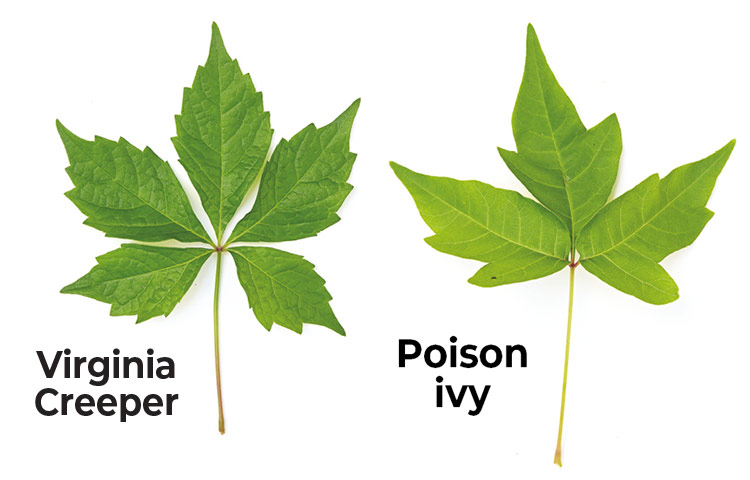
Poison ivy lookalike: Virginia creeper
You might find a Virginia creeper (Parthenocissus quinquefolia) leaf with just three leaflets. But look at the rest of the vine and you'll notice that most have five.










